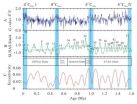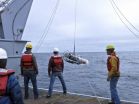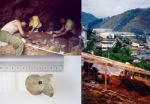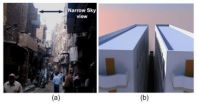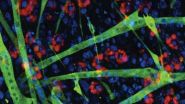(Press-News.org) Wondering what makes an ICT hotspot? Take a look at Munich, London, Paris or smaller cities such as Darmstadt identified in a new EU Atlas of ICT hotspots. This atlas shows where digital technologies thrive and examines the factors contributing to this success.
Most of Europe's ICT activity takes place in 34 regions across 12 countries (listed in the Annex). Key ingredients to success included access to top Universities and research centres and funding opportunities such as venture capital.
European Commission Vice-President @NeelieKroesEU said: "This is proof that digital success comes through a willingness to invest, an open mindset for innovation and planning. Europe needs to build these values today to be a global leader in technology."
Category Rankings
Computer Science graduates: the UK provides 8 out of the 10 top regions
Research and Patenting activity: Germany ranks first.
Employment Growth: Lisboa in Portugal and Rzeszowski in Poland are growing fastest
Venture capital: Munich, Paris and London attract the most capital.
You don't have to be big to succeed!
The study also underlines the importance of smaller regions. For example, Darmstadt -a city of 150.000 people– building on its research & innovative output and on its active business community, ranks number seven at EU's top 10 ICT Poles of excellence. Other small-sized regions showing strong performance are Leuven, Karlsruhe or Cambridge.
Ingredients for digital success
A region's ICT excellence is linked to research and development activities, to the ability to take knowledge to market (innovation) and to building an intense business activity around this innovation. It seems that ICT thriving regions:
are mostly long standing industrial areas;
have high-standard educational institutions and other key innovation players;
have long-term policies on research and innovation;
have enjoyed historical opportunities (such as being the political national capitals);
tend to cluster together (half of the 34 Poles of excellence are neighbouring regions).
This effect is also observed in places like the Silicon Valley (USA), Bangalore (India) or Changzhou (China).
Background
This report addresses the EU Strategy to reinforce Europe's industrial and technology leadership in ICT. The report findings and the Atlas will be used in future EU policy formulation on encouraging innovation in the EU. They will also feed into EURIPIDIS project, which focuses on ICT innovation policy and on transferring the best research ideas to the market. Moreover, the JRC plans to analyse the technological diversity of ICT activity and its evolution; this will help identify complementarities between locations.
A European ICT Pole of Excellence (EIPEs) is a geographical area inside the EU, with best performing activities in ICT production, R&D and innovation, activities with a central role in global international networks.
The report looked at all EU regions (1303 NUTS3 regions) in terms of ICT activity and assigned scores according to its relative weight; 14% of the regions scored above 20 points. The top 34 scored between 41 and 100.
The report analysed three elements (business activity, R&D and Innovation in the ICT sector) on the basis of their intensity (e.g. business turnover, turnover growth, number of employees), their internationalisation (e.g. how many international partners businesses/research centres/universities have) and networking (what is the role of each region in networks: which of them are hubs and connect directly to many partners, which of them have links that only allow few exchanges)
The findings relied on a Composite Indicator bringing together 42 Indicators to evaluate ICT activities. Several data sources and databases were used to elaborate the indicators and measurements: University rankings, citation indexes, information on European research projects' collaborations, how many global top R&D investor companies in ICTs are present in each region, venture capital funding or employment data and companies' turn over information.
The European ICT Poles of Excellence (EIPE) Project is being developed by the Joint Research Centre and DG Connect.
INFORMATION:
Useful links
European ICT Poles of Excellence report: http://ipts.jrc.ec.europa.eu/publications/pub.cfm?id=7140
Hashtags: #research #innovation
Neelie Kroes website:
http://ec.europa.eu/commission_2010-2014/kroes/
Follow Neelie on Twitter
New Commission study identifies Europe's top ICT hubs
European ICT hubs -- an atlas of EU areas where digital technologies thrive
2014-04-14
ELSE PRESS RELEASES FROM THIS DATE:
Climate change: The role of oceanic carbon reservoir over glacial cycles
2014-04-14
Glacial cycles at 104-yr time scale have been the focus of Quaternary paleoclimatology over the last century. In recent years with the emergence of continuous high-resolution records (ice cores, deep-sea sediments etc.) from the longer geological past, increasing evidence underscores the significance of long- duration processes at the time scale of 105-yr or more. WANG Pinxian and colleagues from the State Key Laboratory of Marine Geology, Tongji University, reviewed long-term variations in the oceanic carbon reservoir and indicated their crucial role in major climate regime ...
Genetically modified tobacco plants as an alternative for producing bioethanol
2014-04-14
Tobacco, a high-density crop which is mown several times throughout its cycle, can produce as much as 160 tonnes of fresh matter per hectare and become a source of biomass suitable for producing bioethanol. As Jon Veramendi, head of the plant Agrobiotechnology research group, explained, "tobacco plants as a source of biomass for producing bioethanol could be an alternative to traditional tobacco growing which is in decline in the USA and in Europe because it cannot compete with emerging countries like China".
In the course of the research, which has been echoed by the ...
Puget Sound's rich waters supplied by deep, turbulent canyon
2014-04-14
The headwaters for Puget Sound's famously rich waters lie far below the surface, in a submarine canyon that draws nutrient-rich water up from the deep ocean. New measurements may explain how the Pacific Northwest's inland waters are able to support so many shellfish, salmon runs and even the occasional pod of whales.
University of Washington oceanographers made the first detailed measurements at the headwater's source, a submarine canyon offshore from the strait that separates the U.S. and Canada. Observations show water surging up through the canyon and mixing at surprisingly ...
Study links domestic abuse to mental health problems in new mothers
2014-04-14
A new study shows that domestic abuse is closely linked to postpartum mental health problems, including depression and post-traumatic stress disorder (PTSD), in mothers. The research also found that specific types of abuse are associated with specific mental health problems. The work was done by researchers at North Carolina State University, Simon Fraser University and the University of British Columbia.
"We wanted to see whether and how intimate partner abuse – physical, psychological and sexual – influenced postpartum mental health in women, including problems such ...
Neanderthals and Cro-magnons did not coincide on the Iberian Peninsula
2014-04-14
This news release is available in Spanish. Until now, the carbon 14 technique, a radioactive isotope which gradually disappears with the passing of time, has been used to date prehistoric remains. When about 40,000 years, in other words approximately the period corresponding to the arrival of the first humans in Europe, have elapsed, the portion that remains is so small that it can become easily contaminated and cause the dates to appear more recent. It was from 2005 onwards that a new technique began to be used; it is the one used to purify the collagen in DNA tests. ...
Let the sun shine in: Redirecting sunlight to urban alleyways
2014-04-14
WASHINGTON, April 14—In dense, urban centers around the world, many people live and work in dim and narrow streets surrounded by tall buildings that block sunlight. And as the global population continues to rise and buildings are jammed closer together, the darkness will only spread.
To alleviate the problem, Egyptian researchers have developed a corrugated, translucent panel that redirects sunlight onto narrow streets and alleyways. The panel is mounted on rooftops and hung over the edge at an angle, where it spreads sunlight onto the street below. The researchers describe ...
Wolves at the door: Study finds recent wolf-dog hybridization in Caucasus region
2014-04-14
Dog owners in the Caucasus Mountains of Georgia might want to consider penning up their dogs more often: hybridization of wolves with shepherd dogs might be more common, and more recent, than previously thought, according to a recently published study in the Journal of Heredity (DOI: 10.1093/jhered/esu014).
Dr. Natia Kopaliani, Dr. David Tarkhnishvili, and colleagues from the Institute of Ecology at Ilia State University in Georgia and from the Tbilisi Zoo in Georgia used a range of genetic techniques to extract and examine DNA taken from wolf and dog fur samples as well ...
Regenerating muscle in Duchenne muscular dystrophy: Age matters
2014-04-14
LA JOLLA, Calif., April 11, 2014 — A team of scientists led by Pier Lorenzo Puri, M.D., associate professor at Sanford-Burnham Medical Research Institute (Sanford-Burnham), in collaboration with Fondazione Santa Lucia in Rome, Italy, have published details of how a class of drugs called "HDACis" drive muscle-cell regeneration in the early stages of dystrophic muscles, but fail to work in late stages. The findings are key to furthering clinical development of HDACis for Duchenne muscular dystrophy (DMD), an incurable muscle-wasting disease.
A symphony to rebuild muscle
The ...
New 'tunable' semiconductors will allow better detectors, solar cells
2014-04-14
One of the great problems in physics is the detection of electromagnetic radiation – that is, light – which lies outside the small range of wavelengths that the human eye can see. Think X-rays, for example, or radio waves.
Now, researchers have discovered a way to use existing semiconductors to detect a far wider range of light than is now possible, well into the infrared range. The team hopes to use the technology in detectors, obviously, but also in improved solar cells that could absorb infrared light as well as the sun's visible rays.
"This technology will also ...
A stable model for an unstable target
2014-04-14
A study in The Journal of General Physiology provides new insights about singlet oxygen and sets the stage for better understanding of this highly reactive and challenging substance.
Singlet oxygen is an electronically excited state of oxygen that is less stable than normal oxygen. Its high reactivity has enabled its use in photodynamic therapy, in which light is used in combination with a photosensitizing drug to generate large amounts of singlet oxygen to kill cancer cells or various pathogens.
Light-generated singlet oxygen also plays a role in a range of biological ...
LAST 30 PRESS RELEASES:
Receptors in mammary glands make livestock and humans inviting hosts for avian flu
Icy hot plasmas
Treating adults with autism: Maryland Clinical Center offers national blueprint for care after pediatric transition
University of Phoenix College of Doctoral Studies releases white paper on reclaiming control to build workforce resilience
NCCN Summit seeks to improve care for veterans and first responders with cancer from line-of-duty exposure
ERC Consolidator Grant for soft robotics researcher
Dual-action arts and wellbeing program transforms dementia care
The global plastic waste trade contributes to coastal litter in importing countries, study shows
UT Dallas partners with Tech Mahindra on AI innovation
Blinking less could signal the brain is working harder to listen, Concordia study shows
Male bonobos track females’ reproductive cycle to maximize mating success
New report outlines science priorities for human Mars exploration
Want to curb cannabis-related crashes? Don’t forget older adults, study finds
Expectant management vs medication for patent ductus arteriosus in preterm infants
Pew funds 7 new biomedical research collaborations
The ERC selects 349 mid-career researchers for €728 million in Consolidator Grants
ERC Consolidator Grant awarded to CISPA researcher Rayna Dimitrova
Antimicrobial effects of Syzygium aromaticum and Salvadora persica against common peri-implantitis pathogens in vitro
EVs pose no greater risk to pedestrians than conventional vehicles
Modeling microplastic accumulation under the ocean surface
Pompeii offers insights into ancient Roman building technology
University of Utah engineers give a bionic hand a mind of its own
Transient and long-term risks of common physical activities in people with low back pain
Health care contact days in older adults with metastatic cancer
Brain resilience science reshapes psychiatry from treating illness to building strength
An assessment of the antidepressant potential of deramciclane in two animal tests
Pitt and UPMC study finds epigenetic signature of pediatric traumatic brain injury, paves way for precision recovery tools
Brain discovery opens door to earlier detection of metabolic syndrome in women
SwRI-led study provides insight into oscillations in solar flares
Announcing the third cohort of the Hevolution/AFAR new investigator awards in aging biology and geroscience research
[Press-News.org] New Commission study identifies Europe's top ICT hubsEuropean ICT hubs -- an atlas of EU areas where digital technologies thrive
